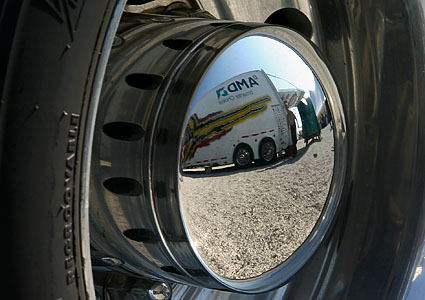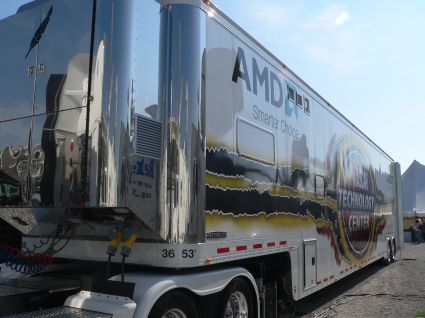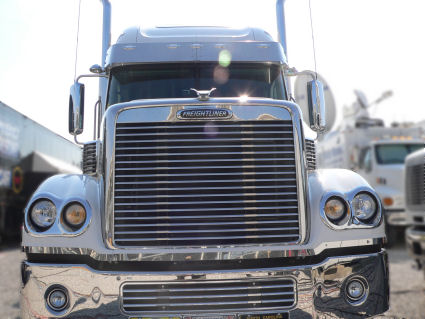How the 'freeze-the-field' rule led to NASCAR's Mobile Technology Center
Indianapolis (IN) - The white flag flew over a crowded New Hampshire International Speedway, and Dale Jarrett was among the last to see it. This was not his day, as his #88 was running in the back of the pack. The car became "loose," as NASCAR drivers refer to cars that respond too easily to the steering wheel. For a moment, he lost control, and the car spun; but the man driving the brown and gold UPS vehicle had by that time lost count of how many times he'd traveled in a spinning vehicle. He brought the car to a stop, pointing the right direction, but in the middle of the backstretch. At the start/finish line, the white flag was replaced with a yellow.
Since the days of the first nationally recognized stock car organizations, there had been a "gentlemen's agreement:" When the yellow comes out, the caution "begins" at the start/finish line, but you can race for position until you get there. At this point in time, most of the cars still in the race had just passed over the line and seen the white flag. Sure, there was a yellow waiting for them next time around, but the checkered would be there too, so from where they were sitting, there was no point in slowing down.
Dale Jarrett could have died that day, and his #88 could have joined a certain #3 on the milestone of history, where Dale Earnhardt had been memorialized just one year before. But like a lone cactus amid a stampede of bulls, every car in the skirmish that ensued avoided the UPS car. Jarrett escaped an horrific fate, and NASCAR escaped a public relations disaster that would have erupted if two giants of the sport had been lost to avoidable accidents. NASCAR knew full well how close it came not only to losing Jarrett, but losing its momentum. This would not happen again.
They would mess with tradition, at least as many in the sports press saw it. Under the "freeze-the-field" rule NASCAR devised, when the caution flag is shown and the yellow lights go on, cars on the track line up behind the pace car in their relative running order at the time the flag is shown. But up until 2002, running order had been determined by when cars crossed the start/finish line. For the new scheme to work, spotters had to keep their eyes on every car, all over the track, at all times, and then agree on what they all saw.
The new rule almost didn't work. In October 2003, on the last lap of the Mr. Goodcents 300 - a Busch series race in Kansas City - a last-lap restart resulted in a crash between Bobby Hamilton, Jr., and Greg Biffle. The caution came out, but some drivers raced to the yellow and checkered flags anyway. In the scramble for position, Jason Keller's car was left in the dust. But when the race was over, NASCAR officials insisted that because Keller was fourth at the time the yellow was shown, he therefore finished fourth. Fans protested - as fans are wont to do whenever tradition is changed. And drivers protested that they didn't see the yellow lights all the way around the track.
NASCAR needed a technological solution, and they needed it yesterday. Its technology partner was AMD. Its national IT general manager, Steve Worling, was already a veteran server administrator, but his background was with Intel-based systems. His brand of choice was HP. The mission before him was this: Design a scoring system and methodology that eventually could be used for every NASCAR race - Nextel Cup, Busch Series, and Craftsman Truck Series - that would be capable of detecting the precise running order at any frozen point in time. It needed to be able to communicate with sensors installed all around every speedway and road course in the NASCAR circuits. Yet the servers communicating with these sensors needed to be the same servers, first of all so that the results between venues could be trusted, but secondly because they didn't want to install fixed, identical servers at every speedway.
One laptop running Windows was not an option. What NASCAR needed was a network command center that was not only portable but mobile. And if anyone understands the fine art of mobility, it's NASCAR.
Get Tom's Hardware's best news and in-depth reviews, straight to your inbox.




